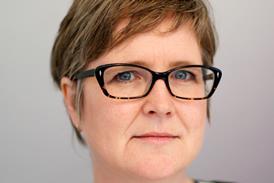Ending child poverty by 2020 is a UK aim.
However, there is increasing evidence that this target is unlikely to be met and that welfare reform is likely to increase child poverty. In November 2011, the Institute for Fiscal Studies estimated a further 100,000 children will fall into child poverty in the next three years.
Healthier Wealthier Children is a Children & Families Financial Inclusion Project funded initially for 15 months by the Scottish Government. A final evaluation conducted by Glasgow Centre for Population Health is due in mid 2012.
In Scotland, national policy from a number of sectors (e.g. Achieving Our Potential, Early Years Framework, Equally Well, Child Poverty Strategy) place high priority on early intervention to promote resilience and prevent health problems including preventing and alleviating the effects of child poverty. Financial Inclusion is a cornerstone of these Scottish Government Policy initiatives. Financial inclusion means access to appropriate financial products and education.
Healthier Wealthier Children carried out a literature review which captured the relationship between child poverty and health, policy context and effective interventions for families with children. Studies have found a wide range of evidence that suggests children born into low income households are more likely to experience developmental problems from birth and accumulate greater health risks in later life not only affecting health but educational and social functioning. Studies have also highlighted that women are at a greater risk of poverty due to combining family and caring responsibilities.
NHS Greater Glasgow and Clyde has a strategic approach to financial inclusion. All NHS services in this health board have the opportunity to directly refer to Money Advice services although staff awareness of this is an ongoing development. NHS staff have also been developing roles in raising patient awareness & skills on financial capability (e.g. budgeting, affordable credit options & financial products, debt management, addressing fuel and food poverty).
However, no systematic approach to financial inclusion had been introduced for families where child poverty was a feature. This is particularly important given that in some areas of NHSGGC there are high rates of “low income households” with children (Glasgow City 62 per cent, West Dunbartonshire 57 per cent, Inverclyde 55 per cent).
The Healthier Wealthier Children project
The Healthier Wealthier Children project was funded by the Scottish Government Social Inclusion Division from October 2010 for 15 months.
The purpose of the project is to test whether there are unmet financial inclusion needs for families with children involved with the NHS and mainstream an approach to this. Development workers (based in Health Improvement Teams) and Income Maximisers (based in Money Advice Services) were employed across NHSGGC. Development workers have roles in:
- Facilitating a strategic approach to financial inclusion for children and families at a local level
- Identifying referral routes
- Providing awareness and training sessions
- Facilitating innovative practice (e.g. adapting groupwork interventions to cover financial capability)
- Collating of evidence of mainstreaming activity
Income maximisers have roles:
- Welfare benefits check with particular specialism in children & families benefits
- Support with benefits crisis loans applications etc
- Advice and employability & referral as affordable credit, fuel, poverty
Is there unmet need?
In 12 months, 2895 referrals to the project were received. The majority of these referrals were on very low income (both out of work & in work poverty). The consensus was the majority of these patients would not have found their way traditionally to Money Advice Services as these type of services are usually accessed when a major financial crisis looms. Traditionally, they also have limited outreach locations.
The Healthier Wealthier Children approach appears to be more preventative and emerging evidence suggests that we are witnessing positive patient outcomes, and that the approach is valued by the referring NHSGGC workforce.
It is envisaged that the final evaluation will provide a more comprehensive picture of the achieved outcomes. Some ongoing examples include better uptake of Healthy Start vouchers & vitamins (a pregnancy passported welfare benefit, which has been associated with national & local implementation challenges) and a significant feature has been Child DLA claims, for example, one client had £17k backdated in Child DLA).
What is the likely legacy of this project?
The most prevalent model in the NHS Scotland in signposting to Money Advice Services. However, patients with multiple and complex needs are unlikely to access signposted services because of stigma. Making direct referrals to Money Advice Services appears as a more efficient & valued approach by patients. Senior managers had reservations about the referral paperwork for NHS staff associated with direct referrals. However feedback from frontline midwives, HVs etc has been positive and senior staff are supportive of taking this approach forward for future years.
The approach is flexible in terms of a mixture of face to face & telephone appointments for a range of locations in areas with multiple deprivation across NHSGGC. In addition, health improvement staff across NHSGGC have been working with a range of colleagues to improve financial capability interventions within mainstream groupwork programmes.
Case studies have been written up on these and further work continues. Specialist work has developed (e.g. on homelessness, addictions, Royal Hospital for Sick Children hyperlink, Special Needs in Pregnancy Service). Further information is available on the Healthier Wealthier Children website.
The following map provides an example of the extent of how much Healthier Wealthier Children has embedded into day-to-day structures and practice (see diagram 1).
NHSGGC is engaging with a number of Scottish government departments and the Scottish Health Boards on sharing learning from the project & similar initiatives. There is engagement with NHS Education Scotland, Health Scotland, the Institute for Research in Social Services and Child Poverty Action Group on a range of materials (e.g. development of a quick guide for Health Visitors on child DLA and quick guide on welfare benefits; information and podcasts for NES Managed Knowledge Network site and Health Scotland Early Years websites).
Most local authorities are reviewing their financial inclusion strategies and the learning is feeding into this. In recognition of the apparent benefits of the approach, the Scottish Government earmarked some funding for NHSGGC contracted Money Advice Services to continue mainstreaming the approach in 2012/13. A future publication is planned in mid 2012 on the final evaluation of the project.
Dr Noreen Shields is planning and development manager, NHS Greater Glasgow & Clyde. James Egan is public health programme manager, Glasgow Centre for Population Health
Downloads
Diagram 1
Word



























No comments yet